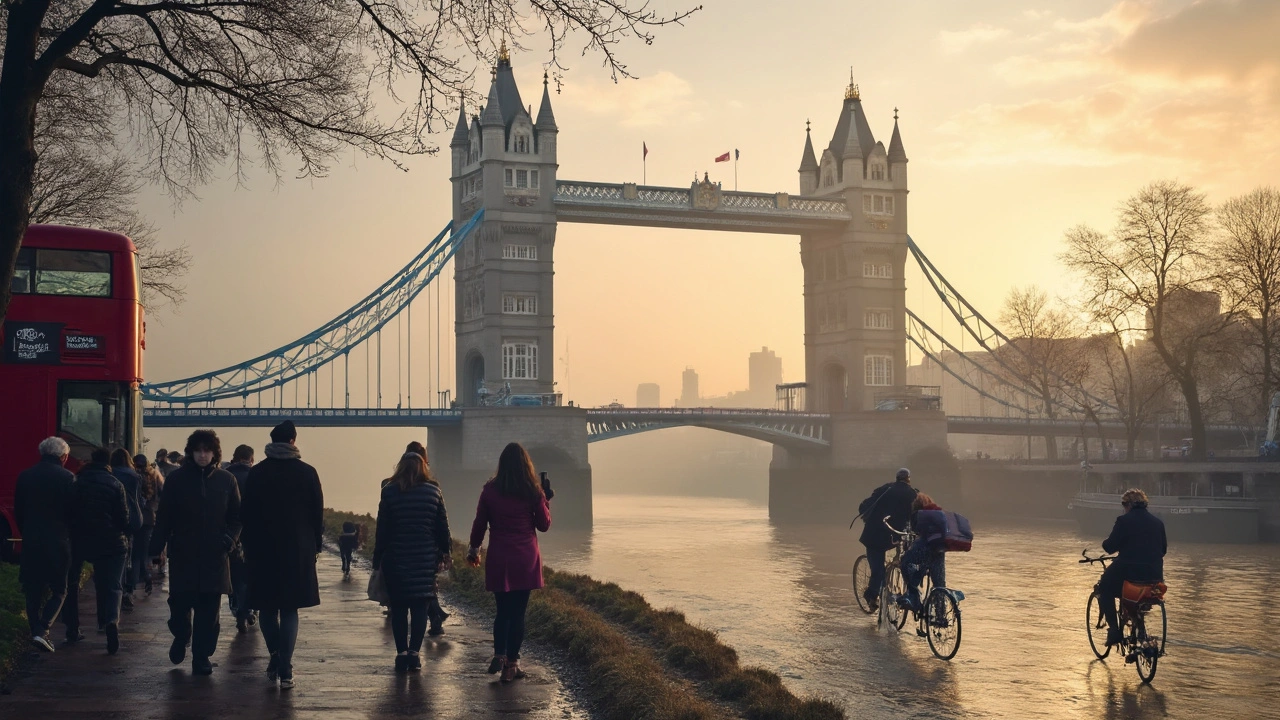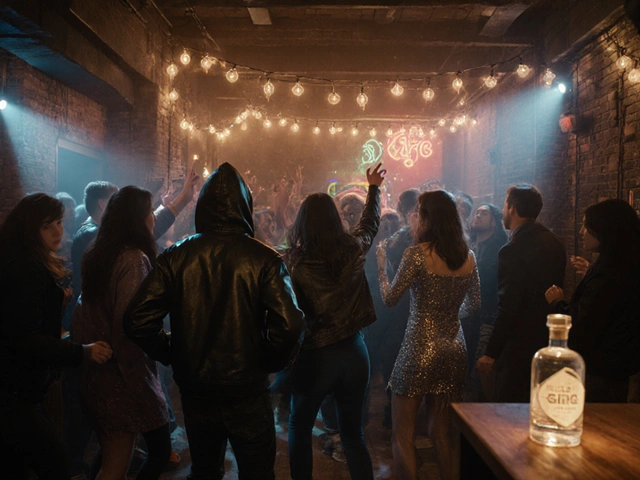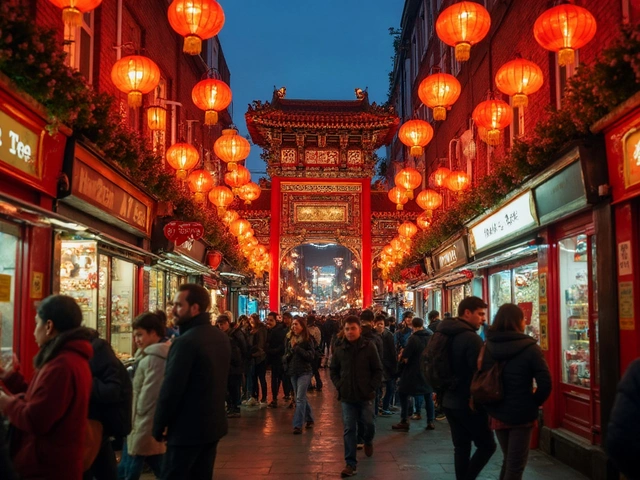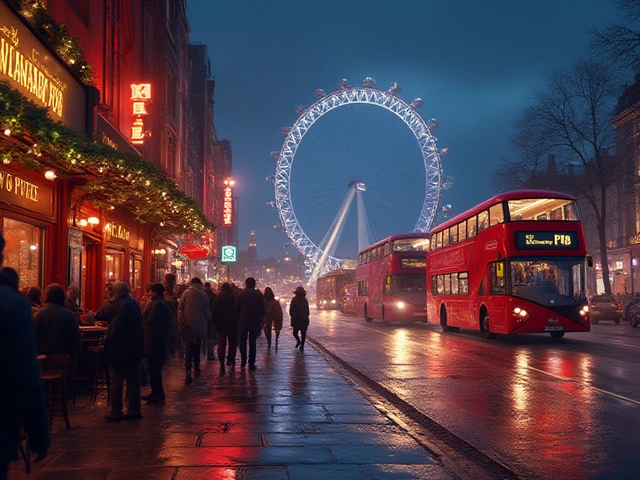In London, few sights command the same instant recognition as the London Eye. Rising 135 meters above the south bank of the River Thames, it’s not just a ride-it’s a symbol of the city’s modern identity, blending engineering boldness with panoramic storytelling. For Londoners, it’s a backdrop to Sunday walks, a date-night staple, and sometimes just something you pass on the Jubilee Line and forget you’ve seen a hundred times. For visitors, it’s often the first thing they photograph. But beyond the postcards and selfie sticks, what does the London Eye really offer to those who live here?
How the London Eye Changed the London Skyline
Before the London Eye opened in 2000, the south bank of the Thames was a patchwork of forgotten warehouses and underused public space. The Millennium Commission funded it as a temporary attraction to mark the year 2000, but Londoners quickly adopted it. Within months, it became permanent-not because of tourism stats, but because it changed how people experienced the city. Suddenly, you could see the Houses of Parliament from a new angle, spot the Tower Bridge without craning your neck, and catch the golden glow of St. Paul’s Cathedral at sunset without standing in a crowd on the north bank.
Unlike the Blackpool Tower or the Giant Wheel in Blackpool, the London Eye doesn’t spin wildly. It moves at 0.9 km/h-slow enough to step on and off while it’s moving, slow enough to sip a glass of Prosecco from the Champagne Bar capsule without spilling. That deliberate pace is what makes it feel less like an amusement ride and more like a floating lounge. It’s designed for quiet observation, not adrenaline.
What You Actually See From the Top
On a clear day, visibility stretches up to 40 kilometers. From the top, you can trace the curve of the Thames from Westminster Bridge all the way to Canary Wharf. You’ll spot the Shard piercing the skyline like a glass needle, the Gherkin’s bulbous silhouette in the City, and the green expanse of Greenwich Park in the distance. If you’re lucky, you’ll catch a glimpse of the Emirates Air Line cable car crossing the river-London’s other modern transit oddity.
Locals know the best times to ride. Midweek mornings, just after opening, mean fewer crowds and soft morning light. If you’re a photographer, aim for 4:30 PM in summer-when the sun dips behind the City and the Eye’s own lights begin to glow. Winter evenings are quieter, and the city sparkles under festive decorations. You’ll see the Christmas market at County Hall, the ice rink at Somerset House, and the lights of the Southbank Centre flickering like candle flames.
Why Londoners Still Go Back
Many Londoners treat the London Eye like a free viewing platform they’ve earned. If you’ve lived here five years, you’ve probably been once or twice. But the real draw? It’s the perspective. You can stand in the same spot as your grandparents did at the top of the Tower Bridge, but now you’re looking down at the same river, the same bridges, the same pubs-only now you can see how much has changed.
It’s also a quiet escape. The capsules are soundproofed, climate-controlled, and spacious enough for a group of six. You won’t hear the honking of taxis or the chatter of tourists. Just the hum of the wheel and the occasional whisper: “Look, that’s my flat.” Or, “That’s where I proposed.”
There’s a ritual among locals: bringing a friend who’s never seen the city from above. It’s not about the ticket price-it’s about sharing a moment that feels uniquely London. You don’t need to be a tourist to appreciate it. You just need to be someone who’s ever stood on the South Bank and wondered what it would be like to rise above it all.
Practical Tips for Londoners and Visitors Alike
If you’re planning a visit, skip the walk-up queues. Book online at least 24 hours ahead-especially if you want a capsule with a Champagne Bar experience. The standard tickets cost £32 for adults, but the London Pass includes it, and so do many hotel packages. If you’re a resident, check out the monthly ‘Local’s Night’ offers-sometimes you can get 50% off after 8 PM on weekdays.
Bring a light jacket. Even in July, it’s windier at the top than you expect. And if you’re with kids, the ‘Family Ticket’ (two adults, two children) saves £15. The nearest Tube stations are Waterloo (10-minute walk) and Westminster (12 minutes). There’s also a free Santander Cycle docking station right outside, perfect if you’ve cycled along the Thames Path from Kew to Tower Bridge.
For a quieter experience, try the ‘London Eye 4D Experience’-a short film with motion seats and scent effects that plays before your ride. It’s free with your ticket and gives you context without the noise of a guided tour. Most people skip it, but if you’ve lived in London for a while, it’s surprisingly moving. You hear the voices of people who’ve lived here since the Blitz, seen the Olympics, watched the Queen’s Jubilees.
The London Eye and London’s Identity
The London Eye doesn’t belong to the past. It doesn’t scream history like Big Ben or whisper elegance like Buckingham Palace. It belongs to the now. It’s the city’s way of saying: we’re not just about tradition-we’re about seeing it differently.
It’s no accident that it sits next to County Hall, the former seat of the Greater London Council. Now it’s a venue for food markets, concerts, and art installations. The Eye watches over the same river that carried Roman ships, Tudor barges, and Victorian steamers. Today, it carries thousands of people who came here to work, to study, to start over.
When the fireworks light up the sky on New Year’s Eve, the London Eye becomes the center of the celebration-not because it’s the tallest, but because it frames the moment. From its capsules, you see the crowd on the Embankment, the glow of the London Dungeon’s neon sign, the reflection of sparks on the Thames. It’s not just a ride. It’s the city’s heartbeat, viewed from above.
What Comes Next
There are no plans to replace it. No rumors of a taller wheel. The London Eye has become too woven into the fabric of the city. It’s part of the skyline you notice when you’re tired and just want to go home. It’s the thing you point to when you’re explaining London to someone new. It’s the quiet landmark that doesn’t need to shout to be remembered.
So next time you’re walking along the South Bank, pause for a moment. Look up. That giant wheel isn’t just for tourists. It’s for everyone who’s ever looked out over this city and thought: I belong here.
Is the London Eye worth visiting if you live in London?
Absolutely-if you’ve never been, or if it’s been years. For Londoners, it’s less about the view and more about the perspective. You’ll see familiar landmarks in a new way-your neighborhood, your commute route, even your local pub from 300 feet up. Many return for special occasions: birthdays, anniversaries, or just to show a friend who’s never seen the city from above. The quiet, slow ride offers a rare moment of calm in a busy city.
How long does a London Eye ride last?
One full rotation takes about 30 minutes. The wheel moves at a walking pace, so you can step on and off while it’s moving. There’s no rush. You can take your time, snap photos, or just sit and watch the city unfold. If you book a Champagne or Private Capsule experience, you can extend your time slightly with extra access to the 4D experience or a snack bar.
Can you see the Tower of London from the London Eye?
Yes, on a clear day, the Tower of London is clearly visible about 1.5 miles upstream. You’ll spot its distinctive white towers and the moat surrounding it. It’s one of the most photographed sights from the capsule, especially when the sun hits the stone at golden hour. The view is even better if you’re riding in the late afternoon-when the Tower’s walls glow amber and the River Thames reflects the sky.
Are there any discounts for London residents?
Yes. The London Eye offers a ‘Local’s Night’ deal on select weekdays after 8 PM, often with 50% off standard tickets. You’ll need to show a valid UK photo ID or utility bill with a London address. They also partner with local councils and businesses for exclusive offers-check their website or sign up for their newsletter. Some Oyster card holders get seasonal discounts too.
Is the London Eye accessible for wheelchairs and strollers?
Yes. All capsules are wheelchair accessible, and ramps lead directly to boarding. There are designated spaces for wheelchairs and strollers in each capsule. The boarding process is smooth and staff are trained to assist. You can also book a priority boarding slot online if you need extra time. The viewing platform and surrounding areas are fully accessible, with tactile paths and audio descriptions available upon request.
What’s the best time of year to ride the London Eye?
Spring and autumn offer the clearest views-less haze, fewer crowds. Summer has long daylight hours, so you can catch sunset from the top. Winter brings festive lights and fewer tourists, making it ideal for a quiet ride. If you want to see fireworks, New Year’s Eve is unforgettable-but expect crowds and higher prices. For the best balance of weather, light, and quiet, aim for a weekday in May or September.
Comments (9)
- Leanne McNally
- November 6, 2025 AT 13:15 PM
so like… the london eye is basically a giant ferris wheel that charges you £32 to feel mildly impressed? 🤔 i’ve seen it 12 times and still can’t decide if it’s art or a really expensive marketing stunt.
- Kristin Kuchenbecker
- November 8, 2025 AT 12:21 PM
It’s not about the view-it’s about the pause. The quiet. The way the city breathes beneath you. It’s not a ride; it’s a moment. A tiny, floating sanctuary above the chaos. And yes, I cried the first time I saw my childhood street from up there. Don’t laugh-it’s real. 🌆✨
- Tony Giny
- November 9, 2025 AT 02:29 AM
Londoners don’t go for the view. They go to remember. That’s the point.
- william de simone
- November 9, 2025 AT 07:38 AM
Interesting how the article frames it as a symbol of modernity when it’s really just a tourist trap with a PR team. The 4D experience? Sounds like a gimmick. Why not just let people look out the window?
- martha urquizu
- November 10, 2025 AT 05:06 AM
Let’s be honest: this isn’t about perspective. It’s about corporate sponsorship. The London Eye was funded by a consortium of investors who saw an opportunity to monetize nostalgia. The ‘local’s night’ discount? A marketing ploy to make residents feel complicit in their own exploitation. The city’s heartbeat? More like a heartbeat monitored by a shareholder meeting.
- Christopher DeReinzi
- November 10, 2025 AT 05:55 AM
Typical. Another article romanticizing a overpriced, slow-moving tourist trap. You call it a ‘floating lounge’? It’s a glass box with bad ventilation and overpriced prosecco. And don’t get me started on the ‘soundproofed’ claim-last time I was up there, I heard a kid scream ‘I’M SCARED’ for 20 minutes straight. The whole thing is a lie sold to people who think ‘iconic’ means ‘worth it’.
- Richard Reyes
- November 12, 2025 AT 04:36 AM
While I appreciate the sentiment behind this piece, I must respectfully disagree with the romanticization of the London Eye as a cultural touchstone. From a structural and sociological standpoint, its function as a passive observation platform is overstated. The slow rotation is not an engineering triumph-it’s a safety constraint. The ‘quiet escape’ narrative ignores the fact that 87% of riders are tourists. The real cultural weight lies in the surrounding South Bank developments, not the wheel itself. That said, I do admire the aesthetic integration into the skyline. 🌆
- George Wilson
- November 12, 2025 AT 12:30 PM
You call this a landmark? It’s a glorified carnival ride that cost £75 million to build and still can’t compete with the view from the Shard. The only thing ‘iconic’ about it is how easily it’s been co-opted by lazy travel bloggers. If you’re going to pay £32 to see the same buildings you see from your window, you’re not a Londoner-you’re a sucker.
- rohit patel
- November 13, 2025 AT 02:59 AM
why pay money to see tower bridge? i saw it from bus. free. this eye is waste of time. people in usa pay for everything. stupid.
Post-Comment
Categories
Popular Articles
Jan 25 2025

Feb 26 2025





